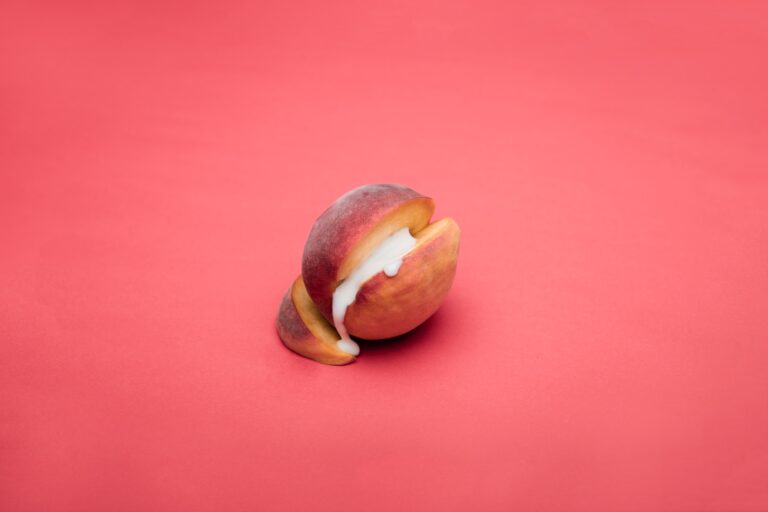The male body holds many mysteries, but perhaps none are as fascinating as semen. Semen (also known as seminal fluid) is a liquid that carries microscopic sperm cells.
These tiny, tadpole-like cells fertilize female eggs to create embryos. They travel in a liquid called semen, which contains nutrients that keep sperm alive.
What is Semen?
Semen is thick white fluid released from the penis during sexual climax (orgasm). The liquid contains sperm, microscopic cells that have the genetic material to make a baby. Semen also contains a host of other things like amino acids, prostaglandins, citric acid, flavins, proteins, zinc, and more. The fluid is often referred to as cum, jizz, spunk, or spooge among other less-than-flattering nicknames.
The sperm cells that comprise the majority of a person’s semen are called spermatozoa. The tiny tadpole-shaped cells travel through the semen to reach an egg in a woman’s body where fertilization takes place and an embryo is formed. A half teaspoon of semen contains as many as 200 million sperm cells.
Other types of cells are found in the semen as well including leukocytes, which are white blood cells that help fight infections, and epithelial cells that line the male reproductive organs. A small number of immature sperm cells may also be present in semen, but they do not have the capacity to fertilize an egg.
Semen contains a variety of chemicals and hormones that ensure sperm is able to swim to the egg without being harmed along the way. Semen is also rich in nutrients and vitamins to fuel sperm on its journey. Semen can change color and texture over time based on different factors. This is typically not a cause for concern, but a drastic change in texture can be an indicator of a health issue.
What is Sperm?
Sperm is a microscopic male reproductive cell that has one very important job, to fertilize a female egg. It can do this either through sex or through in vitro fertilization. The sperm cells are carried to the egg in semen, a viscous fluid designed specifically for this purpose. Semen contains many different types of cells, including spermatozoa, leukocytes, and epithelial cells.
The sperm cells are the main component of semen, but they make up only about 5% of its overall volume. Other components include fluid from the testicles, the epididymis, and the ampulla of the prostate gland. These secretions add enzymes, citric acid, calcium, magnesium, and sugar to the seminal fluid. They also provide power sources for sperm tail movement, which helps them travel (or swim) to the back of a woman’s vagina where they can fertilize an egg.
During sexual intercourse, the semen is pushed out of the penis through the urethra in a process known as ejaculation. Each ejaculation normally contains about 20 million sperm cells. A lab test called a semen analysis evaluates the sperm count, activity (movement), and shape to ensure they are healthy. Slang terms for semen include cum, jizz, spunk, splooge, load, and nut. It is not recommended to use slang terms when discussing sex, as they may lead to confusion and can negatively impact the health of both partners.
What is Semen Fluid?
The terms semen and sperm are often used interchangeably, but they are two different things. Sperm are the motile male reproductive cells that transfer a man’s genetic information to an egg in the female reproductive system. The sperm’s nucleus then fuses with the egg’s to create an embryo that eventually grows into a baby. Semen is the liquid that carries the sperm and contains nutrients that keep them alive while they race to the egg.
Semen is a whitish, viscous fluid that is released from the penis during sexual intercourse. It typically contains nutrients and about 200 million sperm cells in each ejaculation. The sperm cells in semen are called spermatozoa and have a flagellum that helps them move. They are haploid, and one sperm cell can fertilize an egg to create offspring.
Each sperm cell in semen has an alkaline substance on its surface that counteracts the acidic environment of the vagina. The substance is made of a group of basic amines, including putrescine, spermine, and cadaverine. The sperm cells also absorb the alkaline substances into their membranes, which protects them from acidic denaturation and makes them resistant to oxidative damage.
The other components of semen include amino acids, proteins, citric acid, flavins, vitamins C and B12, phosphorylcholine, zinc, and prostrate specific antigen. Healthy semen is a sign that the male sex organs are functioning properly. The quality of semen depends on a man’s diet and daily habits.
What is Sperm Fluid?
Semen is a grayish white bodily fluid that contains sperm cells and is secreted by the testicles. It is then carried by the penis down the seminiferous tubules and through the epididymis into the vas deferens. The fluid is then released into the female reproductive tract upon ejaculation. Semen is usually odorless but can have a faint chlorine or fishy odor. It also contains other substances such as citric acid, free amino acids, fructose, enzymes, phosphorylcholine, and prostaglandins.
A sperm cell (or spermatozoan) has a head which carries genetic material to fertilize a woman’s egg and a tail to help it travel (“swim”) through a woman’s body to reach the egg. A man can release anywhere from 15 million to 200 million sperm cells per ejaculation, depending on his medical history and the quality of his semen.
A health professional can evaluate a sample of semen through a process called a semen analysis. This will determine things such as a sperm count, a sperm concentration, the activity of the sperm cells (motility) and their shape (sperm morphology). It can also provide information about any possible health problems or underlying issues affecting the fertility of a man. For example, if a man has low motility or irregular sperm shape it can indicate poor sperm quality. This could be due to a variety of factors including diet, medications and lifestyle.
See Also:






